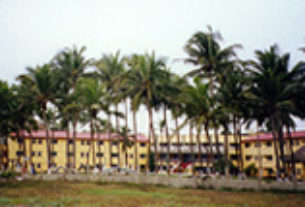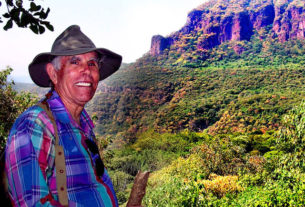For many newcomers, the water distribution systems here in Mexico are different from water supply they are used to in the rest of North America.
In the case of a typical home in Canada or the USA, the municipal water authority will supply potable water from pressurized water pipes under the street in front of their home. The water flow a homeowner will feel in his home is completely driven by the water pressure from the municipal water supply pipes, which is available 24/7. The pressure in these water lines may be provided by a tall water tower or via a pumping system, all managed by a municipal water authority.
The advantage to a continuously pressurized water system is that there is relatively even distribution of water and should a leak occur, in general, the water in the line will be forced out of the water line and not allow any of the material surrounding the pipe to infiltrate and contaminate the water in the system. The greatest concern for leaks is the type of leak that is small and not easily detectable.
In the typical water distribution system here in Mexico, the local water authority will treat the water directly from the well making it potable and then pump it into the water distribution system under the streets. Different parts of the distribution system are provided water by opening and closing the various valves located in the streets, allowing the water to flow to different areas of the distribution system. Typically, these well pumps will operate for a set amount of time during the day, depending on the condition of the individual wells and their capacity to allow water to be pumped. In Ajijic, there are six wells under the local water authority’s control (SIMAPA) that supply water to the various areas within Ajijic. As a result of this method of distribution, the water pipes under the street are not under pressure 24/7 and hence, there is the potential problem of contamination entering the unpressurized pipes.
Also because the street water pressure is not continuous, individual homes will have water reserves on site to provide water 24 hours a day. This is usually via a roof tank called “ tinaco”, which is filled directly by the water pressure from the street. The street water pressure in Ajijic is sufficient to fill a tinaco on top of a two-storey home. Therefore the water flow this homeowner will feel in his home is completely dependent on height of the water in his tinaco. The higher the tinaco, the higher the water pressure and rate of water flow. The relationship between height and water pressure in linear and follows the relationship of 1 psi (pounds per square inch) = 2.308 feet of water (27. 7 inches) therefore a typical one-storey home with a roof tank mounted on the roof will have the water level in the tank approximately 4.5 metres (177.2 inches) above the ground. This relates to a water pressure of approximately 6.4 psi at the faucets.
Now it is possible for a homeowner to use more water than the capacity of the tinaco before it has a chance to refill the next day. Hence, some homeowners have a reserve of water in an underground water cistern called an “ aljibe”. This reserve of water is typically much larger than the tinaco alone. With the aljibe will also be a pump that can drive water from the aljibe to the tinaco and typically, it is automated to turn on when water is needed and off when the tinaco is full. This large reserve in the aljibe was very important many years ago because the wells and water distribution were less reliable and it was possible that water was only pumped through the distribution system a few times a week. Hence the reserve in the aljibe was needed for the normal operation of the home and allow for the increased demand during dry periods of the year.
Water distribution systems will vary depending on the neighborhood or municipality, however, what has been discussed here is typical throughout Mexico.



